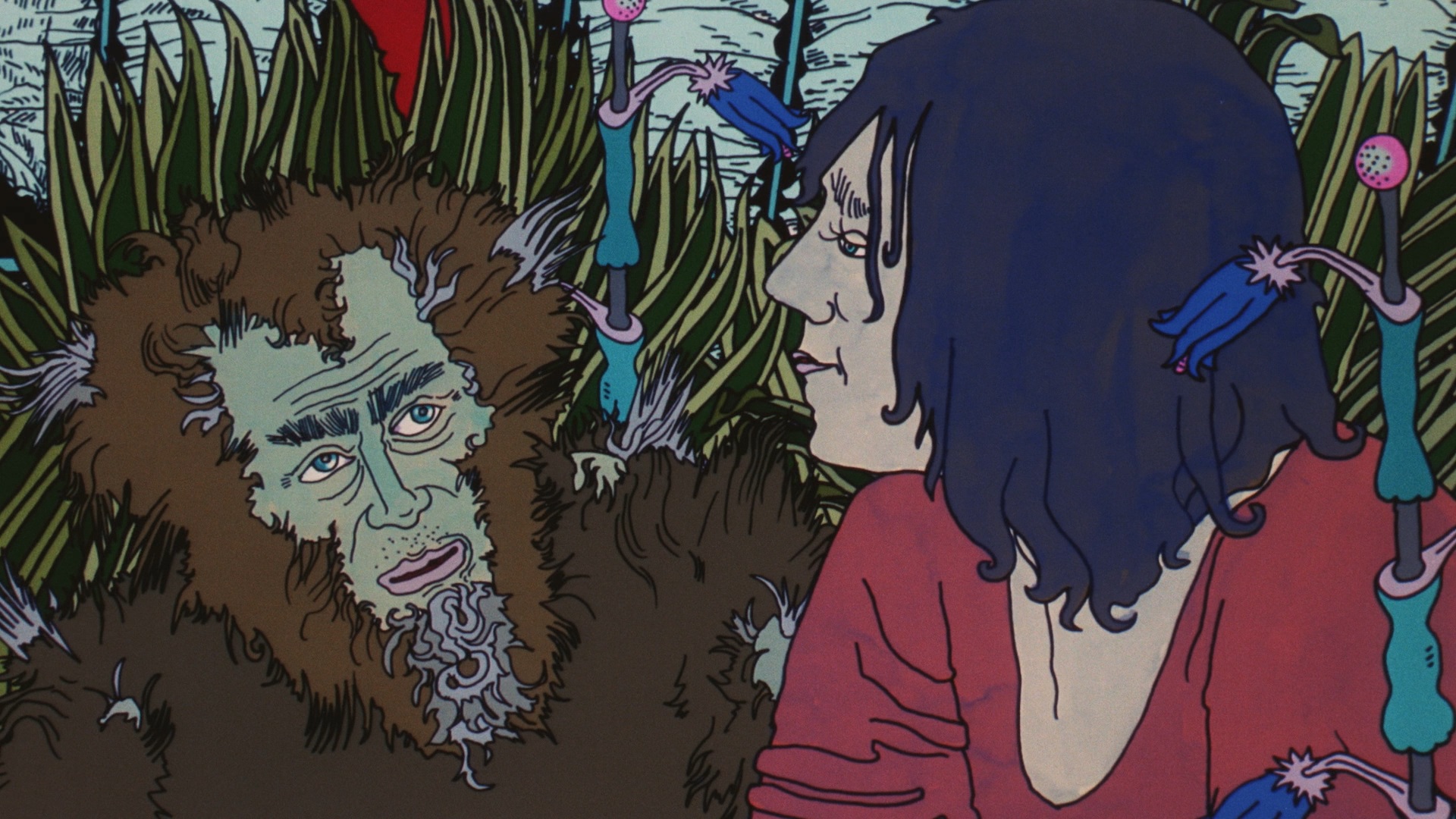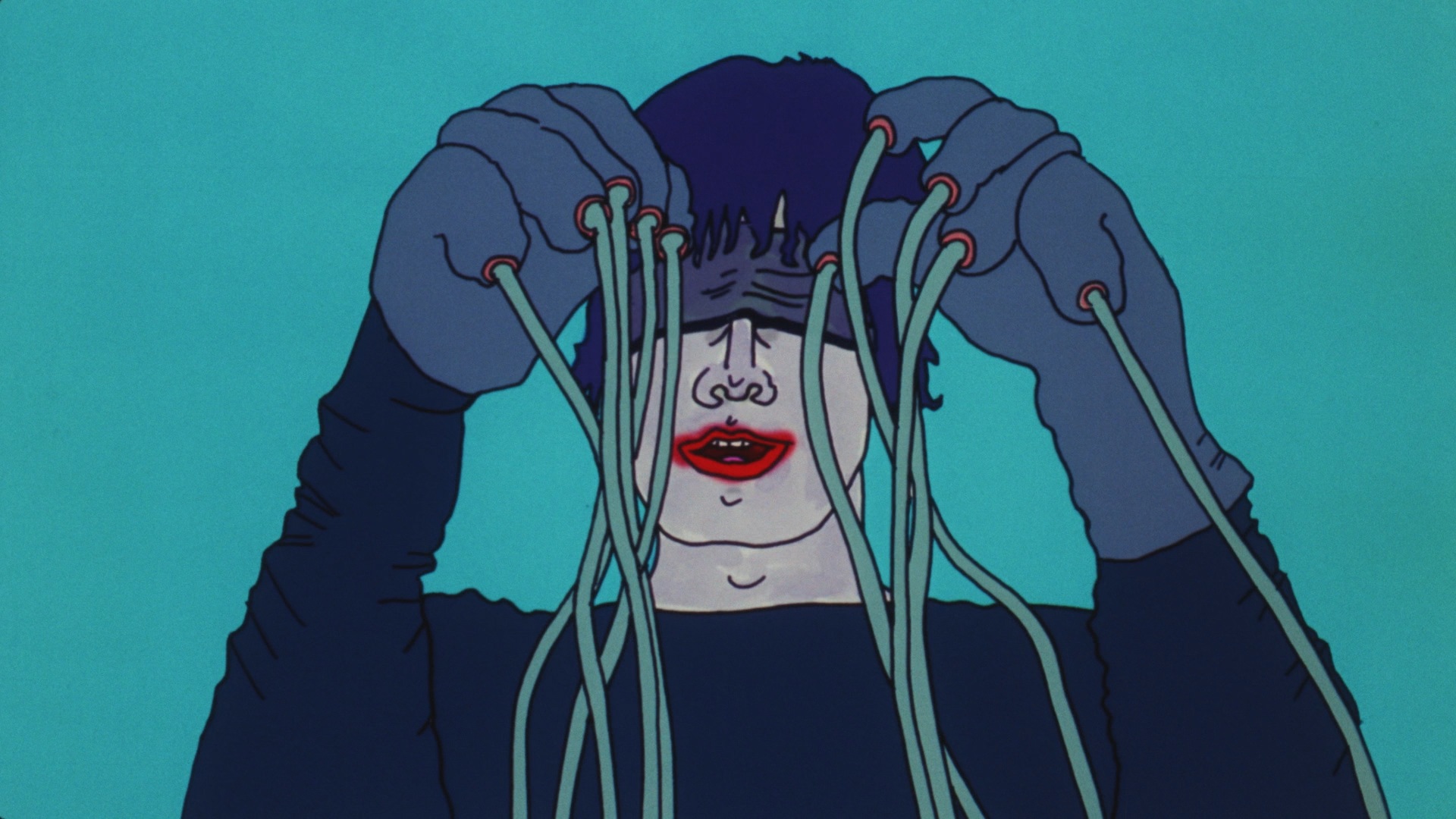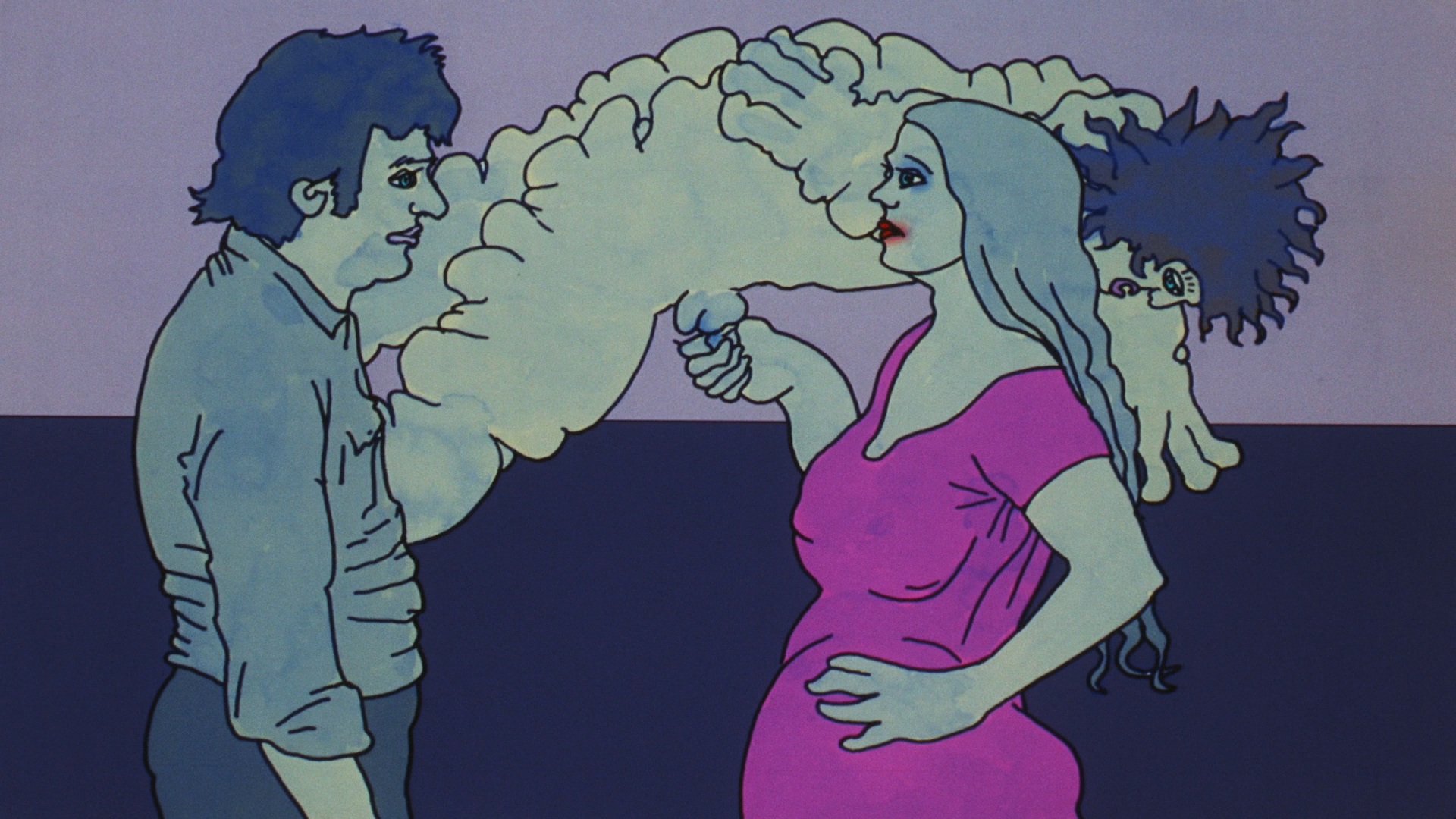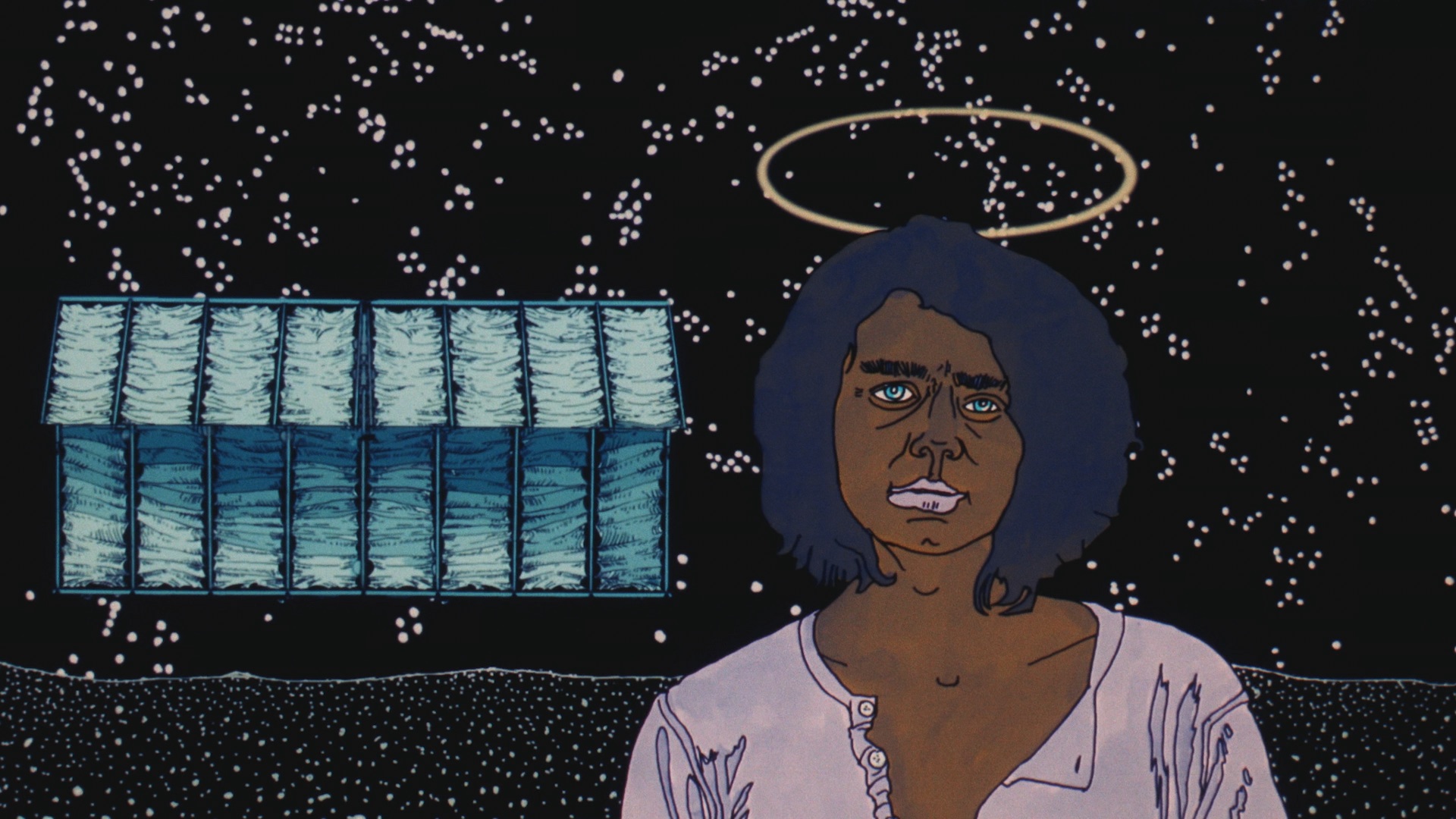

Color, 2006, 60 mins. 37 secs.
Directed by Helmut Herbst
Deaf Crocodile (Blu-ray) (US RA HD) / WS (1.78:1) (16:9)
Color, 2006, 60 mins. 37 secs.
Directed by Helmut Herbst
Deaf Crocodile (Blu-ray) (US RA HD) / WS (1.78:1) (16:9)


 the animated German sci-fi fever dream The Cathedral of New
the animated German sci-fi fever dream The Cathedral of New  Emotions can proudly stand as the trippiest title released to date by Deaf Crocodile -- and that's saying something! Animated in a vivid manner that looks like a high school Magic Marker experiment gone haywire, this final feature from Dada artist and filmmaker Helmut Herbst crams a lot into its one-hour running time. The Blu-ray packaging compares this to Fantastic Planet, which makes sense as long as you bear in mind this makes that René Laloux classic look like a grounded, textbook example of linear plotting by comparison.
Emotions can proudly stand as the trippiest title released to date by Deaf Crocodile -- and that's saying something! Animated in a vivid manner that looks like a high school Magic Marker experiment gone haywire, this final feature from Dada artist and filmmaker Helmut Herbst crams a lot into its one-hour running time. The Blu-ray packaging compares this to Fantastic Planet, which makes sense as long as you bear in mind this makes that René Laloux classic look like a grounded, textbook example of linear plotting by comparison.  topless twins occasionally jump in for commentary. Their path is destined to cross with a shaggy-haired feral guy named Matthew Madson, who can shed some light of the very nature of their
topless twins occasionally jump in for commentary. Their path is destined to cross with a shaggy-haired feral guy named Matthew Madson, who can shed some light of the very nature of their  existence.
existence.  cooperation of Herbst’s wife, Renate Merck. It certainly does look impressive, retaining the tactile quality of the original animation with that marker quality to the colors giving
cooperation of Herbst’s wife, Renate Merck. It certainly does look impressive, retaining the tactile quality of the original animation with that marker quality to the colors giving  it a distinctive flavor. The DTS-HD MA German 2.0 stereo audio (with optional English subtitles) is also in great condition with the music sounding especially strong. The film can also be played with a new audio commentary by film historian Rolf Giesen, who does a fine job of filling the hour with plenty about his own professional and creative brushes with the director, the history of Dada and its influence here, the relevant state of German animation, and plenty more. Obviously this isn't a scene specific track in any way, something he makes clear right from the outset. "Werkinterview Filmkunst: Helmut Herbst" (26m7s) from 2013 is a short documentary by Anja Ellenberger, featuring some great interviews with the man himself, clips from his extensive work, and coverage of his Dadaist involvement with an arts collective called The Coop who tried to push into new forms of cinema. Finally, "Downcast Eyes" (18m12s) is a video essay by experimental filmmaker and film scholar Stephen Broomer about the German Dadaist movement and its influence for decades on popular culture and resistance to fascism which led up to this feature. The deluxe edition comes in the usual ornate slipcase packaging (with a design by Beth Morris) including a 60-page book, heavily illustrated and featuring essays by Alexander McDonald and Walter Chaw about this once very obscure film's place in experimental animation, German cinema, and the treatment of outer space as a delirious mode of artistic expression.
it a distinctive flavor. The DTS-HD MA German 2.0 stereo audio (with optional English subtitles) is also in great condition with the music sounding especially strong. The film can also be played with a new audio commentary by film historian Rolf Giesen, who does a fine job of filling the hour with plenty about his own professional and creative brushes with the director, the history of Dada and its influence here, the relevant state of German animation, and plenty more. Obviously this isn't a scene specific track in any way, something he makes clear right from the outset. "Werkinterview Filmkunst: Helmut Herbst" (26m7s) from 2013 is a short documentary by Anja Ellenberger, featuring some great interviews with the man himself, clips from his extensive work, and coverage of his Dadaist involvement with an arts collective called The Coop who tried to push into new forms of cinema. Finally, "Downcast Eyes" (18m12s) is a video essay by experimental filmmaker and film scholar Stephen Broomer about the German Dadaist movement and its influence for decades on popular culture and resistance to fascism which led up to this feature. The deluxe edition comes in the usual ornate slipcase packaging (with a design by Beth Morris) including a 60-page book, heavily illustrated and featuring essays by Alexander McDonald and Walter Chaw about this once very obscure film's place in experimental animation, German cinema, and the treatment of outer space as a delirious mode of artistic expression.![]()